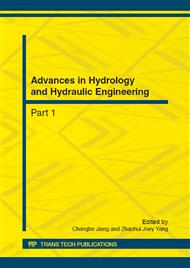p.327
p.332
p.336
p.341
p.345
p.351
p.358
p.362
p.366
High-Resolution Integrated Detection of Underwater Topography and Geomorphology Based on Multibeam Interferometric Echo Sounder
Abstract:
During the construction of hydraulic engineering, it usually needs high-resolution and integrated investigation of underwater topography and geomorphology, and shape and position of underwater construction or obstacle. Based on the multibeam interferometric echo sounder, this paper analyzes high-resolution bathymetric topography method of multibeam interferometric principle, and applies the time of arrival (TOA) and direction of arrival (DOA) estimated by interferometric technology to achieve bottom backscatter geomorphology imaging. This method obtains high-resolution bottom backscatter imagery, and its space position realizes the one-to-one with bathymetric data, which makes bathymetric and backscatter imaging data merged accurately in integrated detection of topography and geomorphology. Moreover, the processing results of experiment data from Qingjiang River, in Hubei province of China, show the validity of the method.
Info:
Periodical:
Pages:
345-350
Citation:
Online since:
October 2012
Authors:
Price:
Сopyright:
© 2012 Trans Tech Publications Ltd. All Rights Reserved
Share:
Citation:


